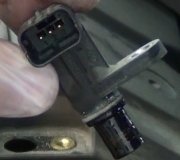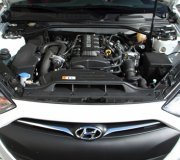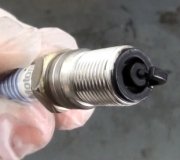Nope. GM and Ford like to build cars with no "camber" adjustment, but GMs can usually be made adjustable when necessary. The special cam bolts have off-center heads. As you rotate them, those heads push on the strut to make it move. They also provide the mechanic the ability to set camber very precisely without a lot of trial and error. (Camber is the inward or outward tilt of the wheel / tire as viewed from in front of the car).
All alignments include a test-drive usually before, and always after the alignment. Did the mechanic not notice the shaking was still there? Also, did you ask for an alignment or did you ask to have the shaking diagnosed? If you just asked for an alignment, sorry to say you did get what you asked for. But, if you asked to have the shaking diagnosed, they did not do their job. The things to look for first are signs of a bent wheel, as in marks from hitting something, then for a broken tire belt. Badly broken tire belts appear as a hump or tumor on the tire's tread but be very careful when running your hand over it. Often the ends of the steel belted cords are sticking out and they really smart when you get poked by one. Many broken belts can be more subtle and harder to diagnose. If in doubt but you suspect a belt problem, switch the two right side tires, then drive the car to see if the symptom changed. You may feel the shaking in the seat instead of the steering wheel. If there was no change, switch the two left wheels and tires.
The last thing to suspect is a worn inner cv joint housing. That will show up as a shaking steering wheel under moderate acceleration, and it will go away during cruising or coasting. There are other potential causes of a shaking steering wheel but they involve parts that were recently disassembled, typically to do a brake job or replace a wheel bearing.
Tuesday, February 26th, 2013 AT 2:23 AM


